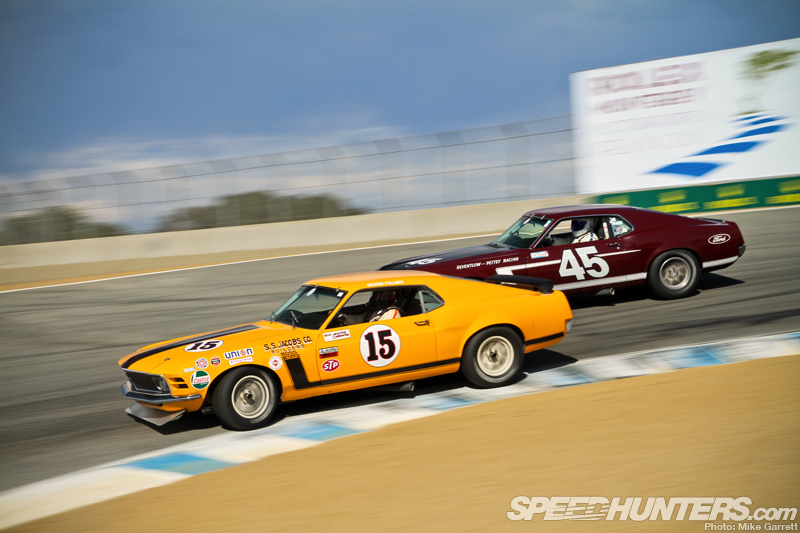
It’s been over a week now, but I’m still sitting here trying to recover from the sights and sounds I experienced recently at the Rolex Monterey Motorsport Reunion. While the race weekend was full of everything from pre-war grand prix cars to all-wheel drive turbocharged Audis, one of the true highlights of the event is the running of the vintage SCCA Trans Am cars.
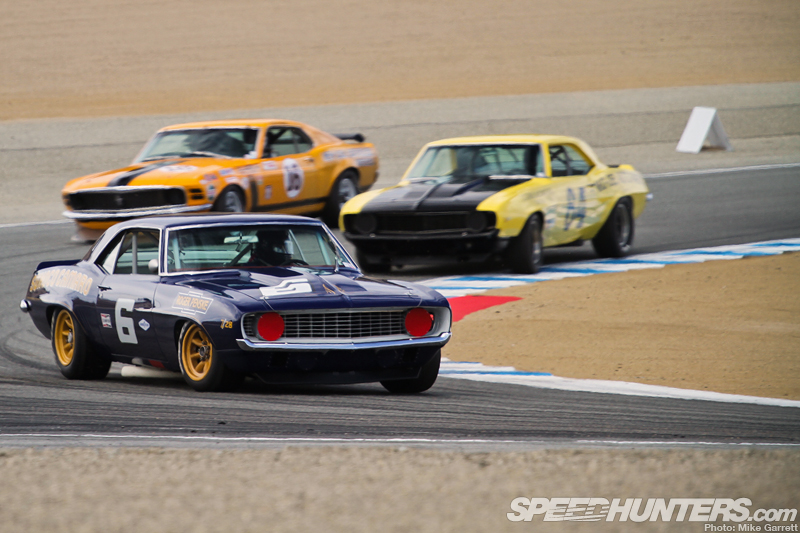
With that in mind, I figured I’d dedicate a special post to sharing some of the Trans Am images I gathered over the course of the weekend and to wax poetically about why I think that particular series was so good, and how special it is to see these cars in action today – over four decades after they originally raced.
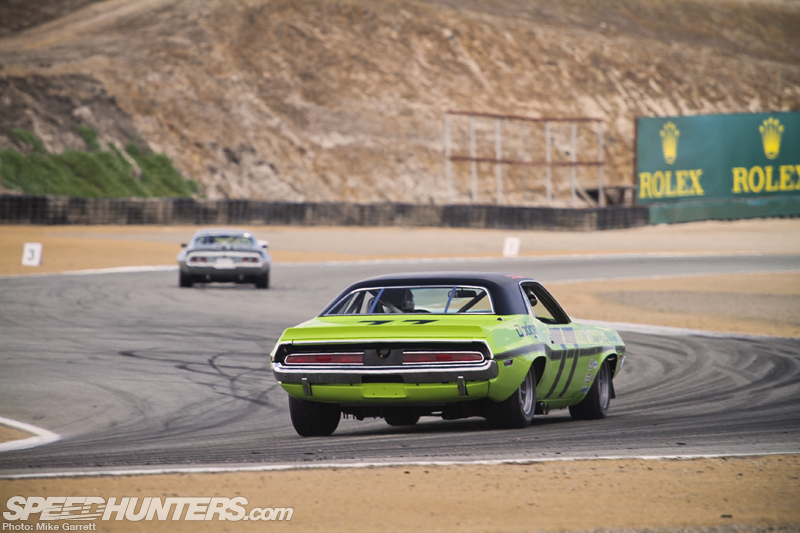
For starters, in the context of the Rolex Monterey Motorsports Reunion – the 1966-1972 Trans Am cars are very much the all-American gang. Compared to some of the priceless Ferraris, Porsches and Aston Martins competing at Laguna Seca, the Trans Am group has a distinctively blue collar vibe. Don’t get me wrong though, these Trans Am machines are genuine historic vehicles with real competition history and some are at or near the million dollar mark in terms of value. The feeling though, is way more steak and beer than it is wine and cheese.
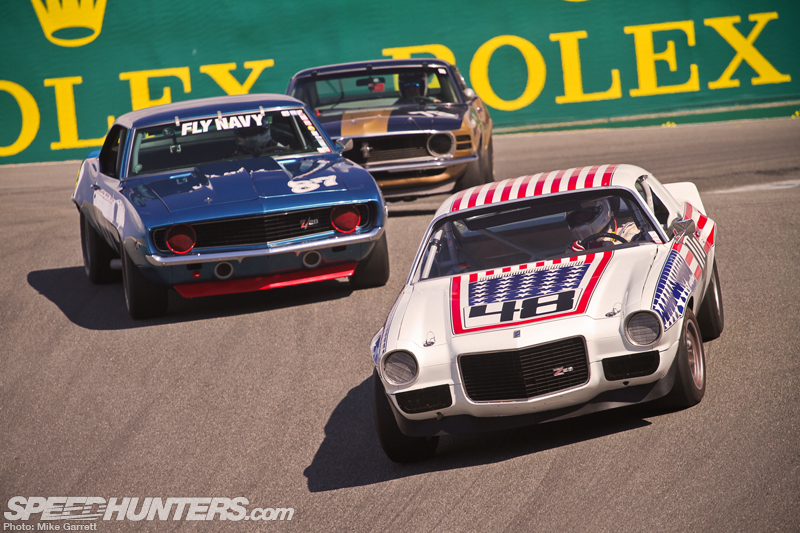
At this year’s Rolex Historics, the Trans Am group featured a field of over 40 cars, which I’m told is actually a larger field than any of the real Trans Am races had back in the late ’60s and early ’70s. That’s right, we are talking about more than 40 V8-powered vintage American Pony Cars taking to the track at once. You might be able to imagine what that sounds and feels like, but I’ll just say it’s simply some of the loudest and most visceral racing you’ll ever see, past or present.
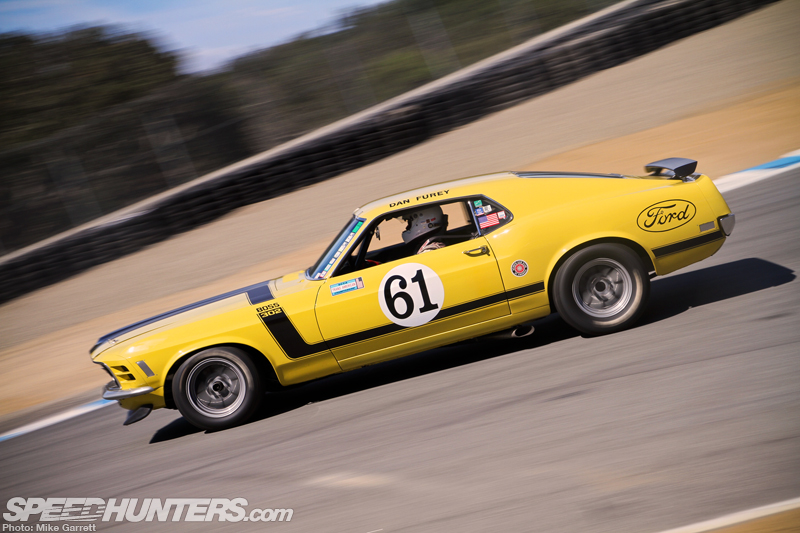
But what makes these Trans Am cars even better in that they are seemingly doing something they weren’t designed for. The prevailing image of cars like the Mustang, Camaro and Challenger is one of dragstrips, burger joints and straight boulevards. Yet at the height of the muscle car era from 1968-1972, the Trans Am racers were out there battling it out on North America’s great racing circuits for the hearts (and wallets) of a huge audience.
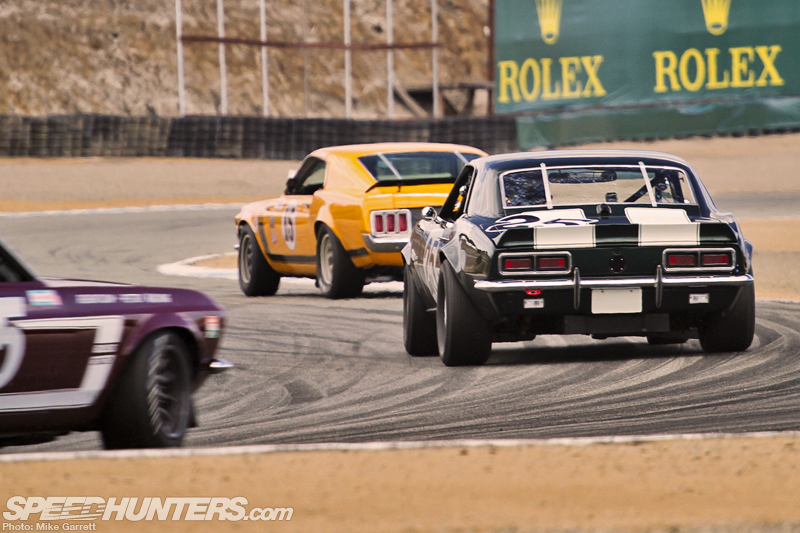
That’s just one reason I and so many others have fallen in love with the history and excitement of the golden age of Trans Am racing. Muscle cars are supposed to be big archaic machines that couldn’t a turn a corner if their life depended on it, right? These guys take that stereotype and destroy it in a cloud of dust, late braking and beautifully modulated oversteer – and it’s been that way since the ’60s.
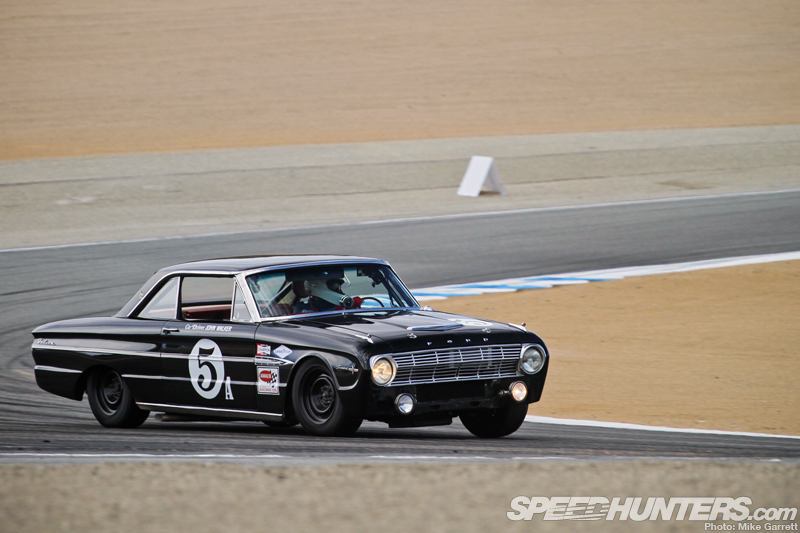
The SCCA Trans Am series began modestly in 1966 with classes for sedans powered by engines both above and below 2.0 liters, with the higher displacement class featuring cars like the early Mustang. Dodge Dart and Plymouth Barracuda. This 289-powered ’63 Ford Falcon Sprint originally driven by James Taylor is a perfect example of the cars that ran early Trans Am events.
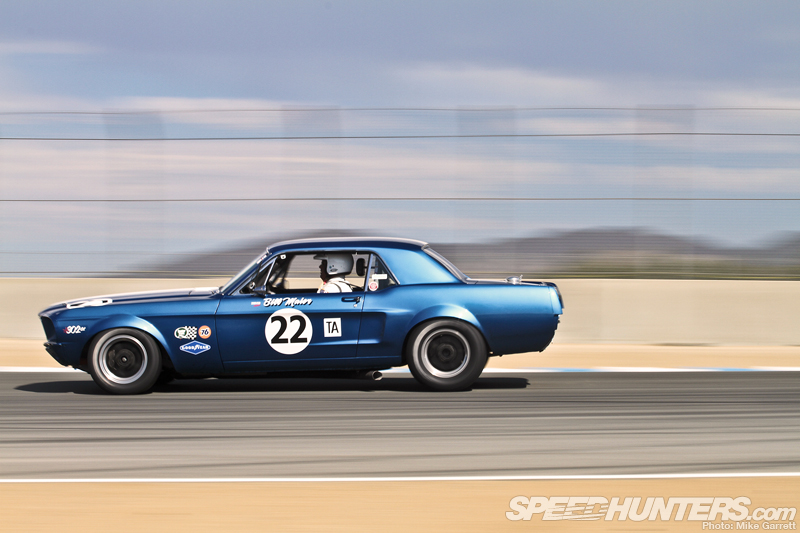
The Mustang quickly became one of the most popular cars in the series, with the notchback model being the preferred version during the first few years of Trans Am. Along with a number of privateer entries, Shelby also prepared many coupe-bodied Mustangs for use in Trans Am competition.
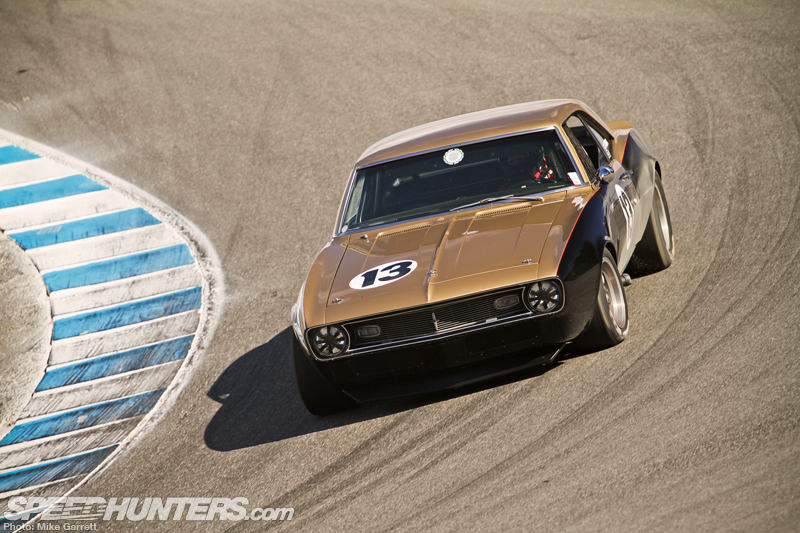
In 1967 Chevrolet introduced the Camaro to capture some of the Pony Car market that Ford had created with the Mustang a few years earlier. The Camaro soon became another popular platform for Trans Am racers, with few being more well known than the Smokey Yunick ’68 which is now owned and driven by the Edelbrock family. As with all of Yunick’s race cars, the Camaro was equipped with a number of rule-bending modifications to help give it a competitive edge.
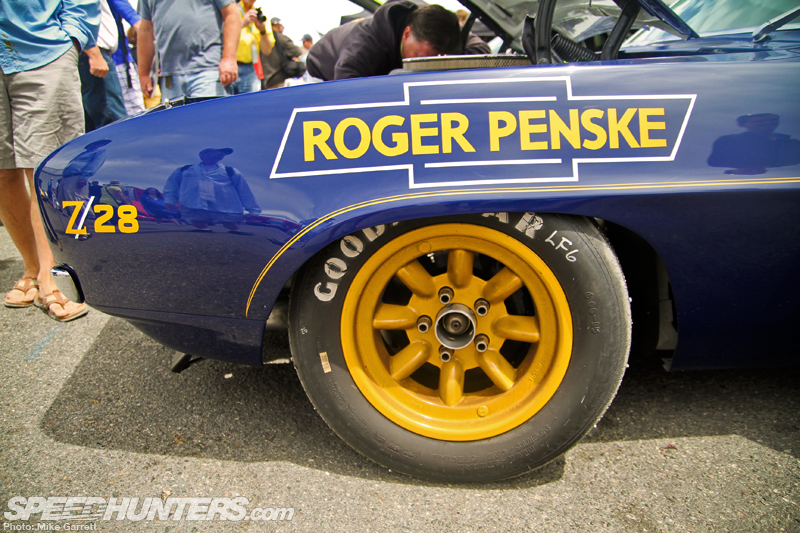
With the exploding popularity of the American Pony Car market and the rising influence of Trans Am, automakers saw the potential of campaigning their own factory-supported cars in the series. Soon, Trans Am became one of the premier battleground for Detroit’s automakers.
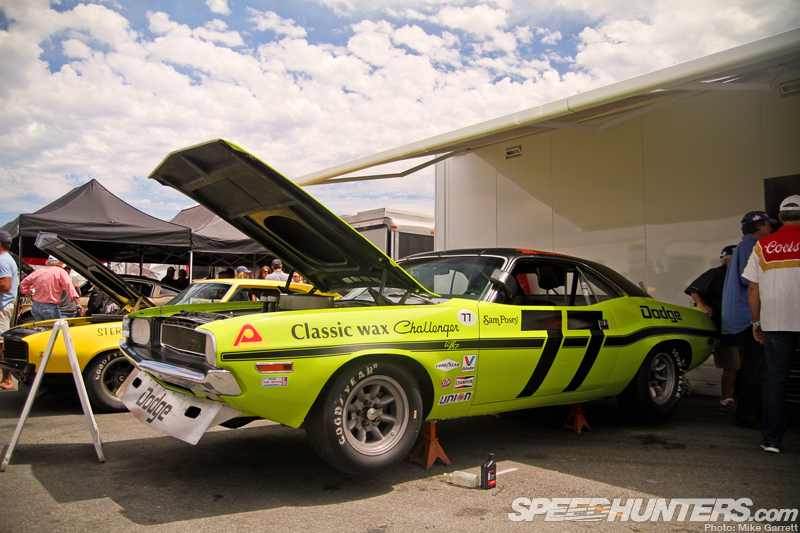
The series would be directly responsible for the introduction of many famous production street cars that are heavily sought after by collectors and enthusiasts today. Cars like the Camaro Z/28, Boss 302 Mustang, Challenger T/A and AAR ‘Cuda all owe their existence completely to Trans Am racing.
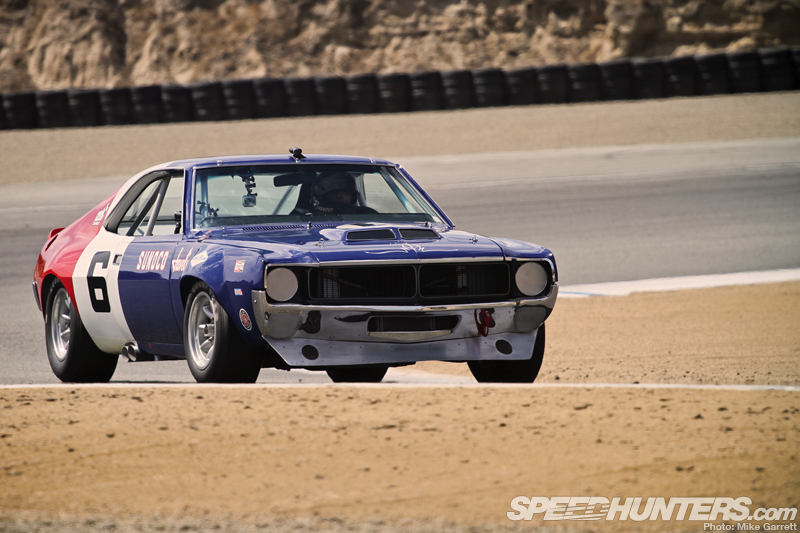
Of course it wasn’t just the Big Three that could be found battling it out in Trans Am. American Motors became a perennial overachiever in the series with its distinct red white and blue colored Javelins. Even if the Javelin would never have any where near the sales numbers of its rivals, AMC’s success on the race track was incredible.
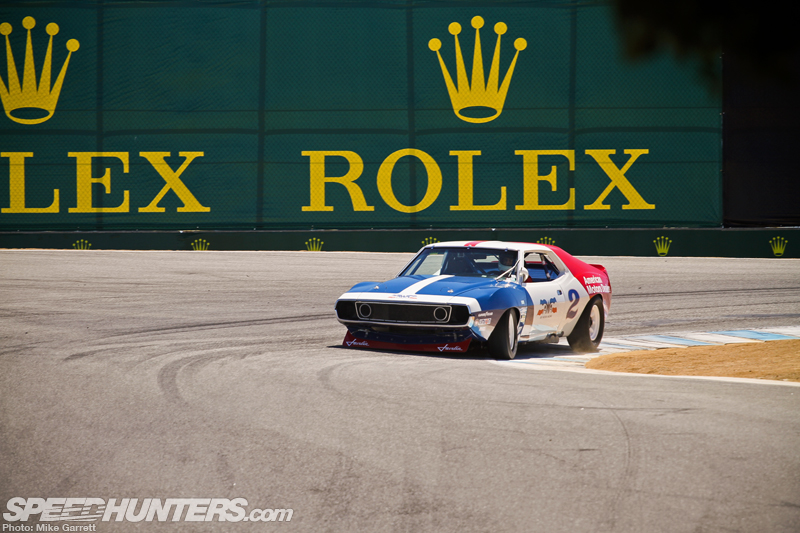
Much of AMC’s Trans Am success is credited to Roger Penske, who left the Camaro behind to head up AMC’s factory team in 1970.
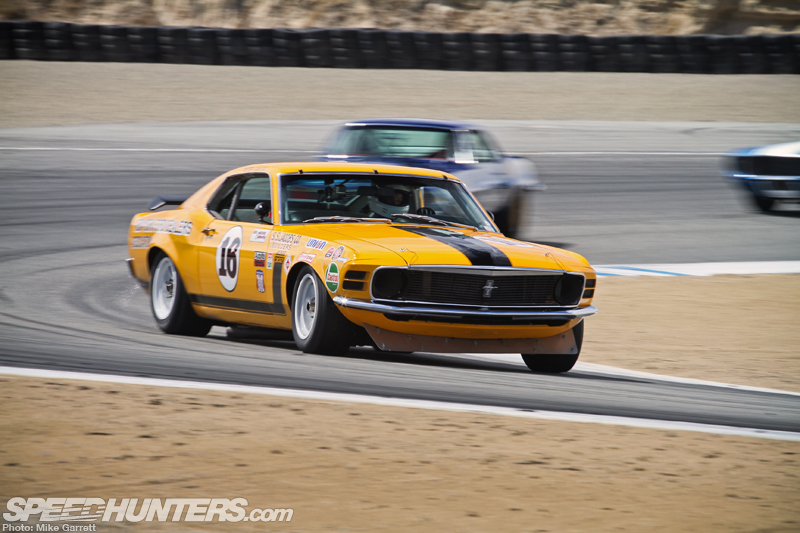
AMC’s primary rival would be Ford’s factory-supported team, which campaigned its Bud Moore-prepared Boss 302 Mustangs and took the manufacturer’s championship during the 1970 season.
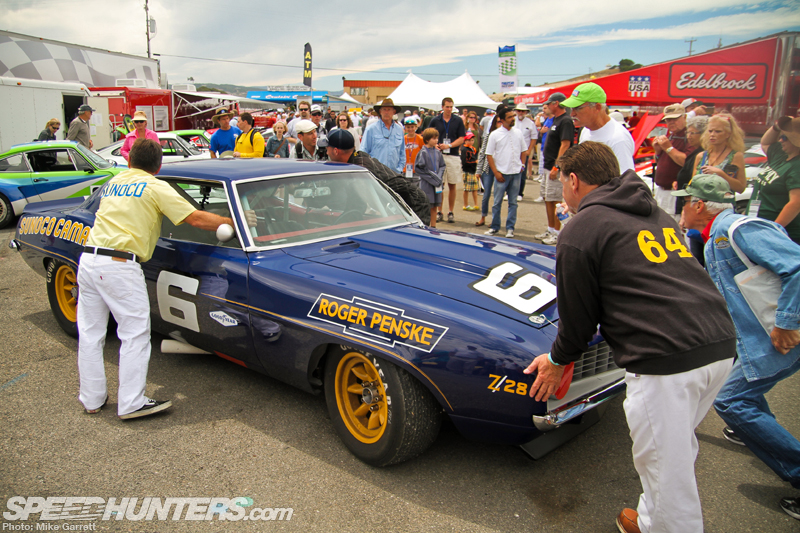
Perhaps the greatest thing about Trans Am during the late ’60s and early ’70s was the strong resemblance these cars had to their production counterparts. The series redefined the old saying “Win on Sunday, sell on Monday.”
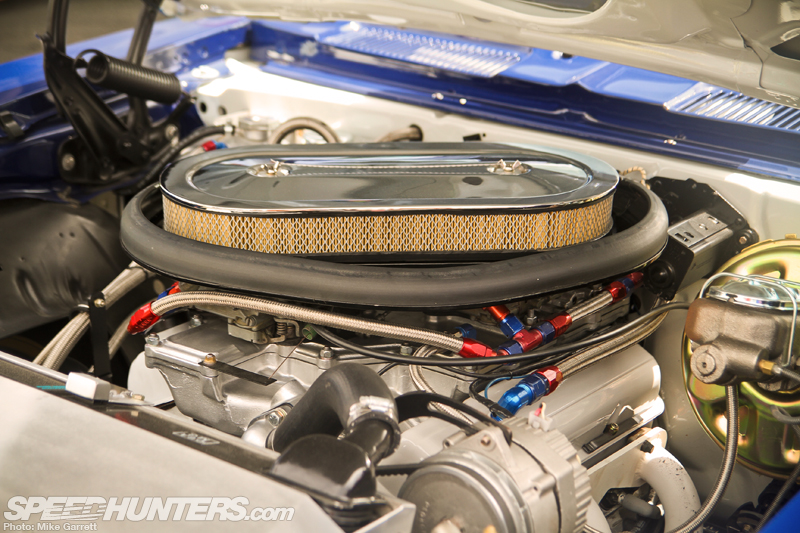
Sure the suspensions were modified, special weight-saving tricks were used, and their 305 cubic inch (the displacement limit in the class) engines were built to realize every last drop of horsepower – but the cars looked and felt every bit like the ones found on showroom floors and street corners across the country.
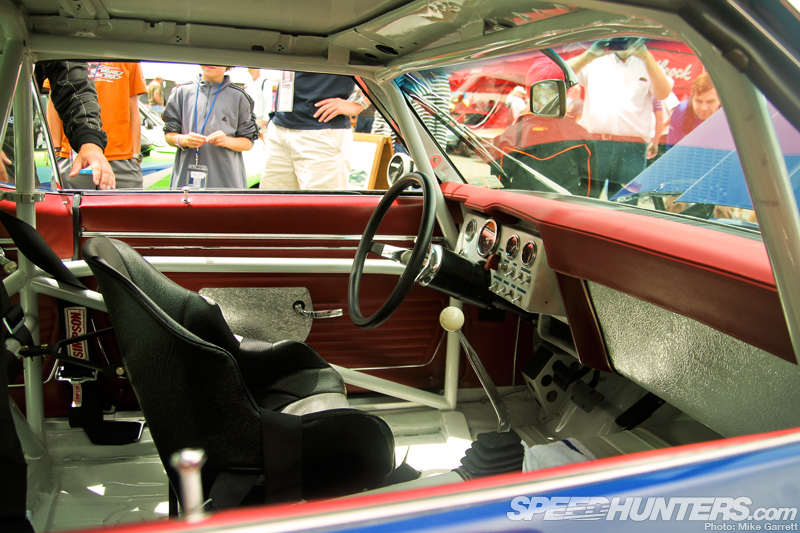
This is something I love not just about Trans Am cars, but about so many racing machines from this era. It’s also one of the reasons why I can’t get nearly as excited about modern race cars as I can old ones.
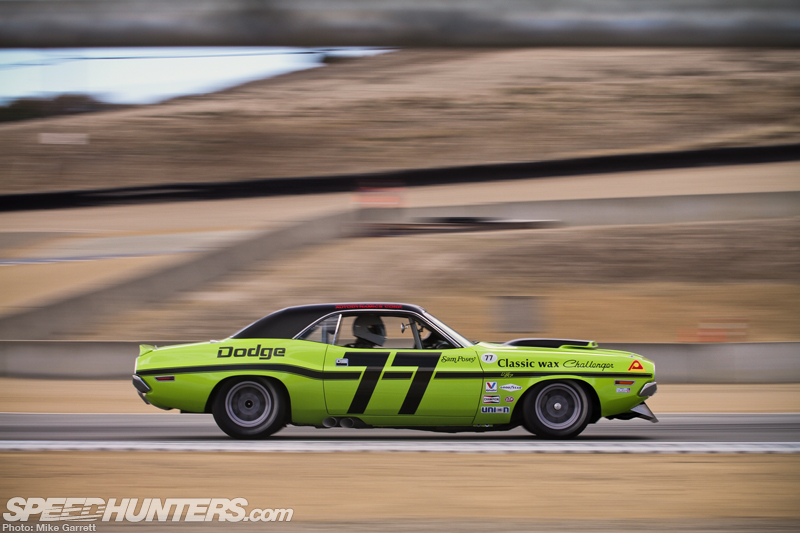
While the machinery was great, Trans Am was made all the better by the talented men who drove these cars. The series featured an all-star cast of legendary drivers including Parnelli Jones, Sam Posey, George Follmer, Dan Gurney and Mark Donahue – all of whom had great international success across a range of motorsport disciplines.
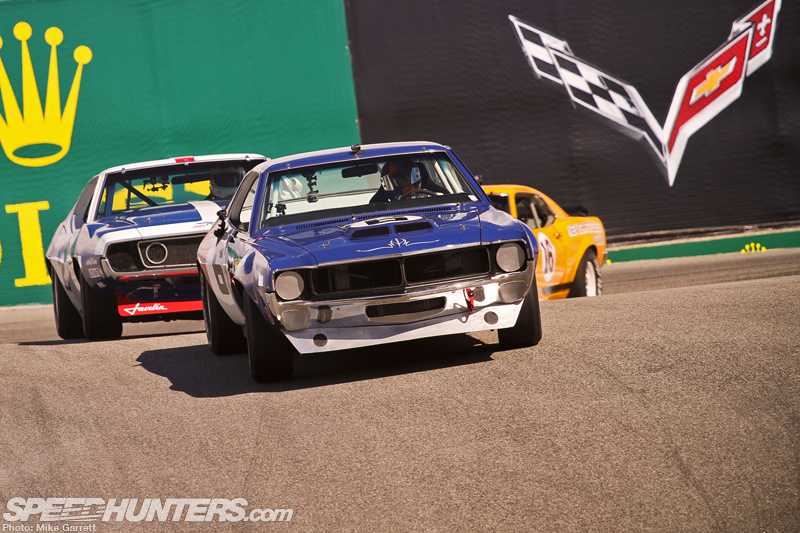
It’s hard to describe the what it’s like to watch these cars race to someone who hasn’t witnessed it in person. While all of the cars are powered by similarly-prepared V8 engines with rear-wheel drive and comparable size and weight, you really begin to pick out the differences in the cars as you watch them run.
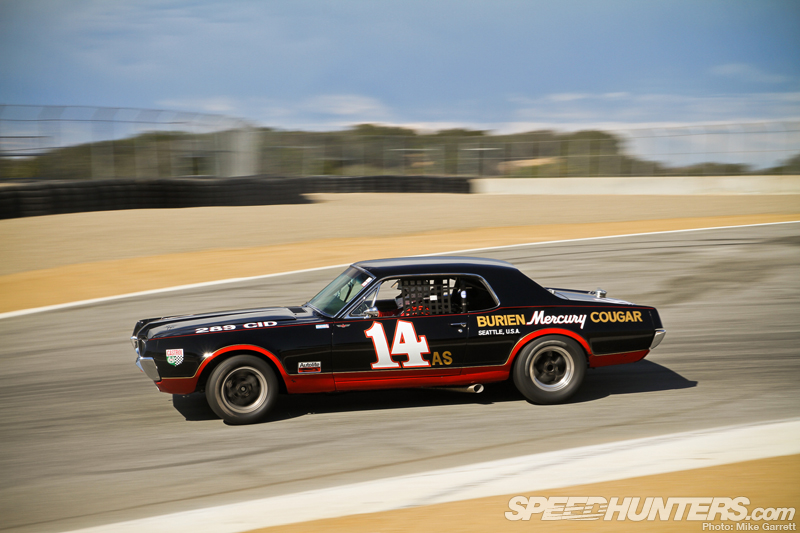
As you watch the action, you begin to notice how certain cars behave differently through corners – you notice the differences between the roar of the small block Ford motors and the AMCs, which have to be the loudest cars on the track. These have all the personality you could ask for – again something I think is often missing from modern race cars.
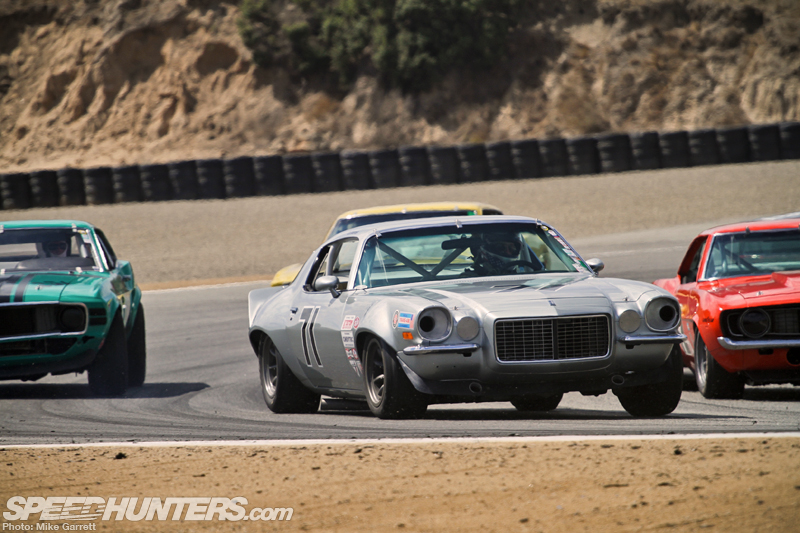
And while you won’t see the drivers of today’s Historic Trans Am group passing through the grass like Parnelli Jones or banging fenders in braking zones, you’ll still find the competition gets pretty heated when their race begins.
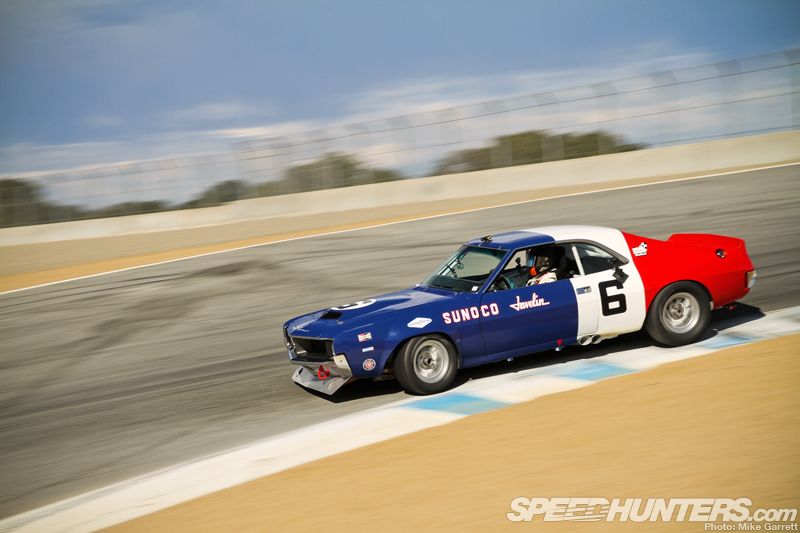
Bruce Canepa in particular always seems to drive his 1970 Javelin like an absolute madman, but then again he drives everything like a madman.
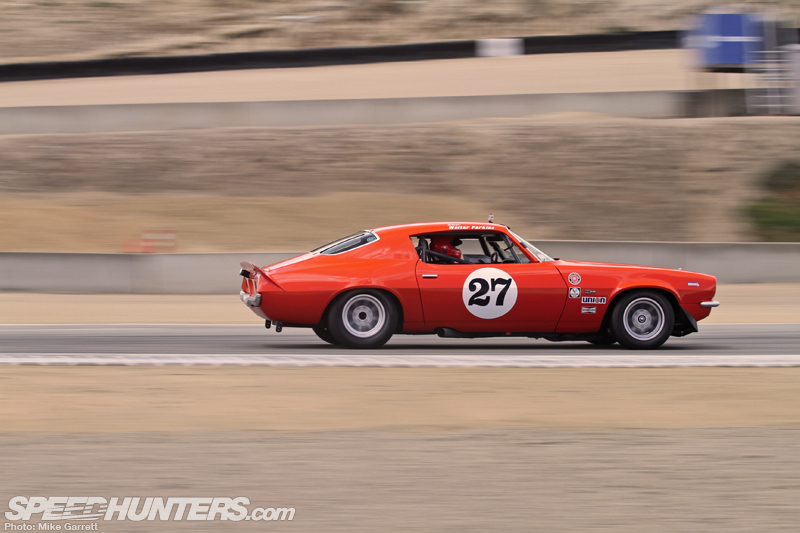
Aside from that, there’s the simple fact that late ’60s and early ’70s Trans Am machines are some of the coolest looking race cars of all time.
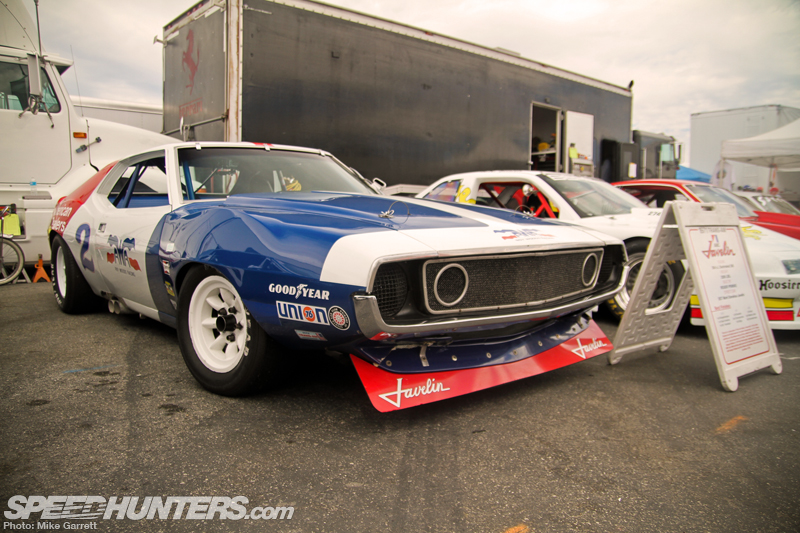
Aggressive chin spoilers, wide wheels and fat tires, ground-hugging stance and those glorious side pipes – I really could spend all day staring at these cars.
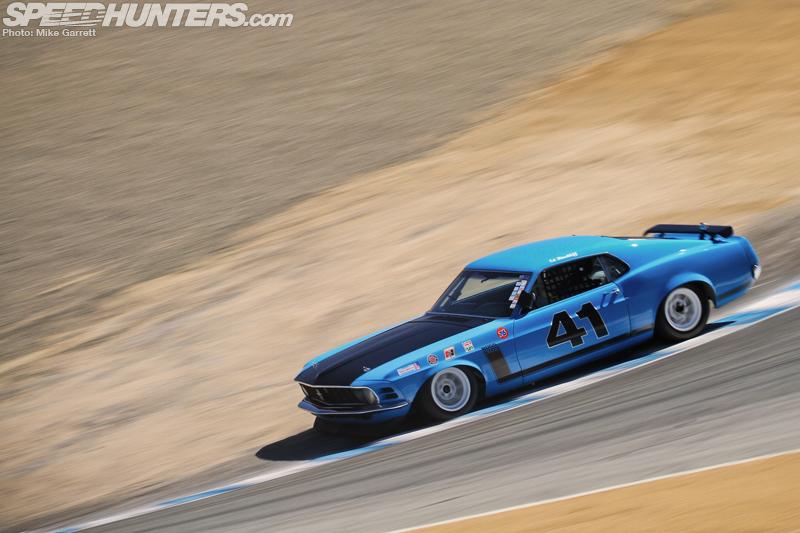
While all of the aforementioned stuff was of course done to make the cars faster, it also helped give them a style and personality that is unforgettable. As personal matter of opinion, when it comes to Pony Cars I much prefer this classic look over the big wheel pro-touring style that’s become so popular in recent years.

As for the history of the Trans Am series itself, the golden era was relatively short-lived. By 1971 most of the OEM support would be gone and as the ’70s continued the high performance Pony Cars themselves would disappear from the market as the gas crunch and government regulations took hold of the auto industry.
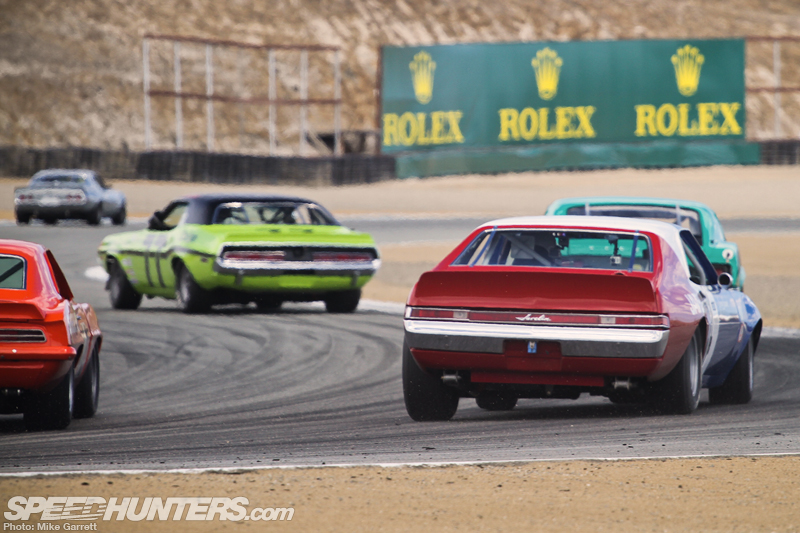
The Trans Am name would continue on in various forms over the following decades with a move to tube-chassis based race cars, but nothing would have the same magic or excitement that existed between 1966 and 1972.
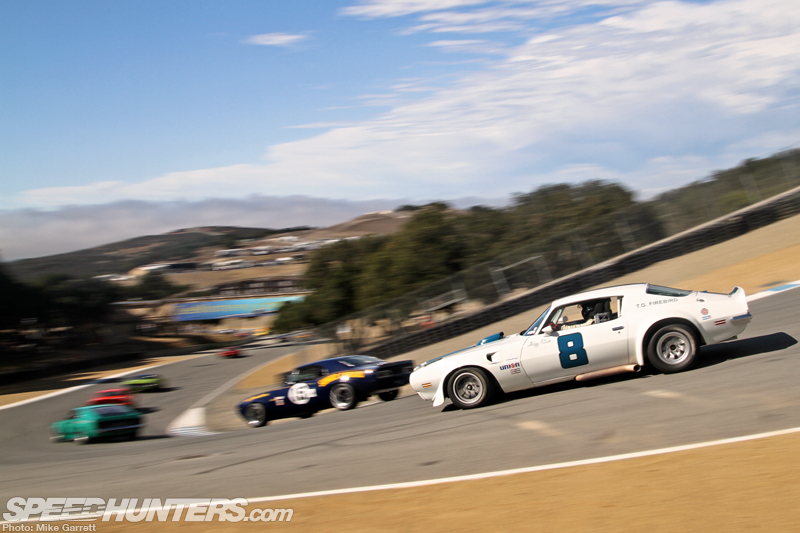
However, with the efforts of the organizers, car owners and drivers of the Historic Trans Am group, the glory days the series are being reenacted regularly at vintage race events across the USA. There are many great things about these gatherings, but for me just the opportunity to experience historic Trans Am in action is worth the cost of admission alone.
I’ll never know exactly what it was like to have been trackside at a real Trans Am race during the golden era, but thanks to the Historic Trans Am racers and events like the Rolex Historics it sure feels like I was part of this unforgettable period of American motorsport history. In other words, mission accomplished.
Mike Garrett
Instagram: speedhunters_mike
mike@speedhunters.com
More Rolex Monterey Motorsports Reunion stories on Speedhunters






These great cars (and their drivers) have their own website: for more info got to http://www.historictransam.com
Always felt like trans am was real american racing. Not this nascar nonsense! I wish modern trans am was more popular today...sad face.